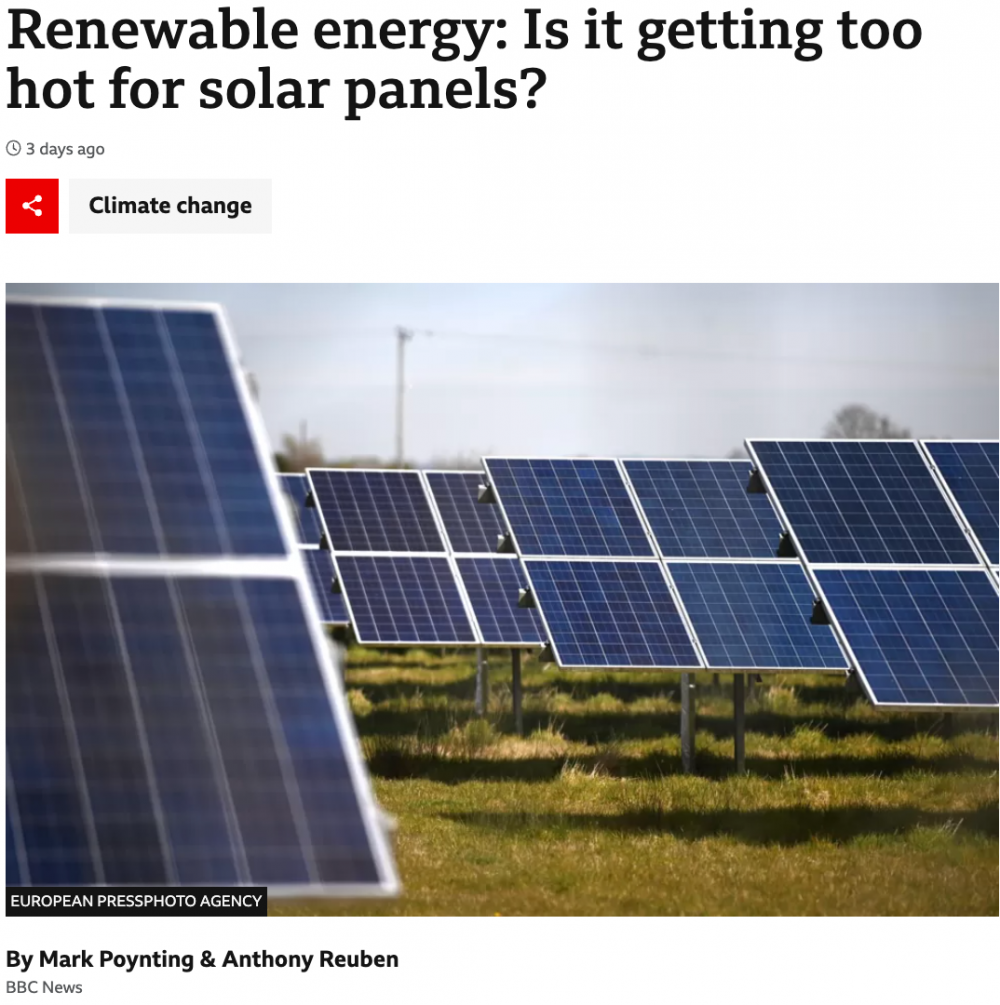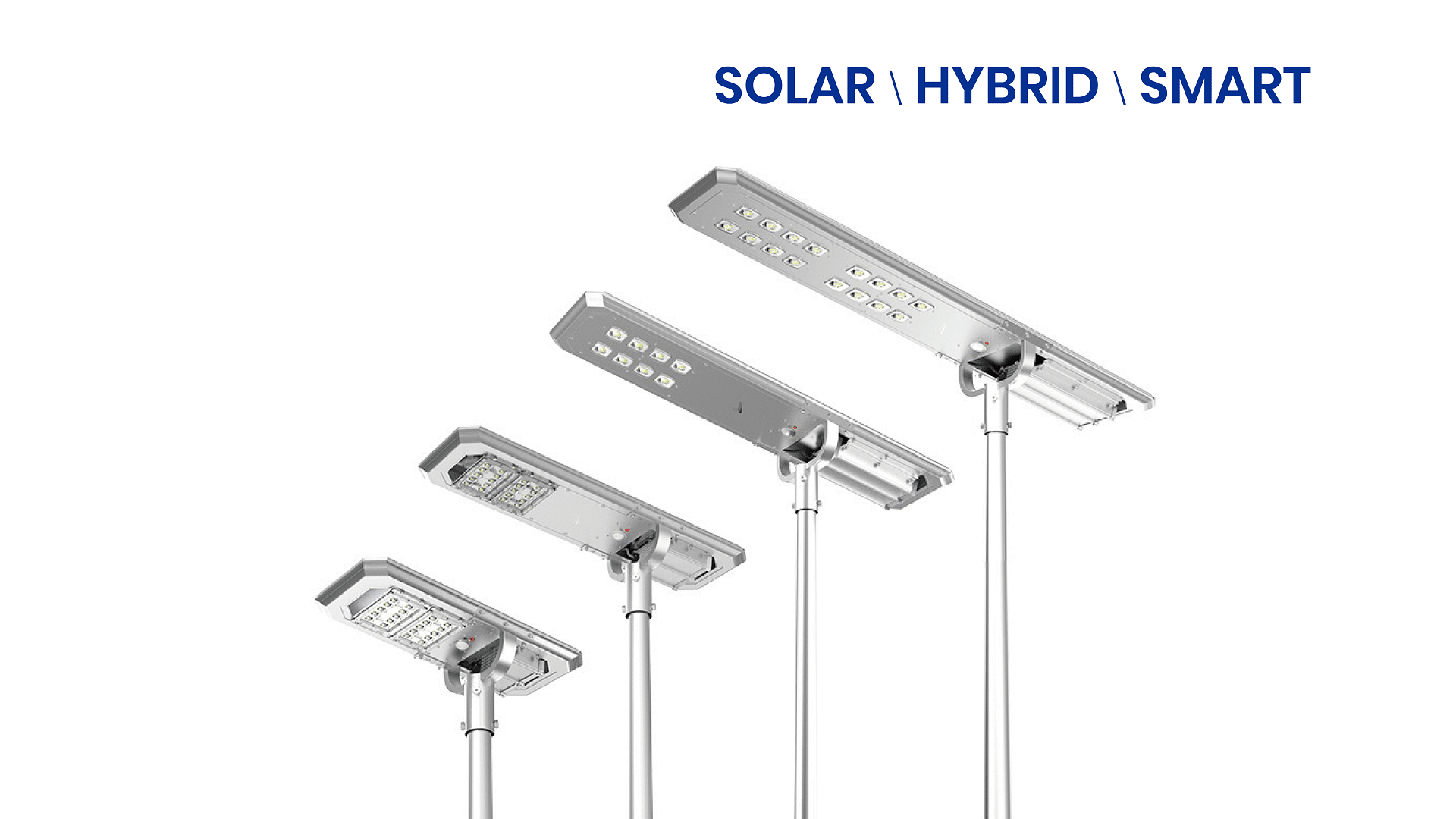According to the BBC, the UK used coal power for the first time in 46 days due to a decrease in solar energy output.British MP Sammy Wilson tweeted, “In this heatwave, the UK has had to fire up coal-fired generators because the sun is so strong that solar panels have had to go offline.” So with plenty of sunshine in the summer, why did the UK start coal power?
While it is correct to say that solar panels are less efficient at high temperatures, this reduction is relatively small and is not the main reason for starting coal-fired power stations in the UK. It might seem counterintuitive, extreme heat can decrease the efficiency of solar panels. Solar panels convert sunlight into electricity, not heat, and when the temperature increases, their efficiency in converting light to electricity decreases.

Possible difficulties with solar energy caused by increased temperature
While solar panels thrive in sunny conditions, excessive heat can present several challenges to the efficiency and longevity of a solar energy system. Here are some potential difficulties caused by increased temperatures:
1. Decreased Efficiency: Solar panels convert sunlight into electricity, not heat. As the temperature rises, the efficiency of solar panels decreases due to a phenomenon known as the temperature coefficient. For every degree above 25°C (77°F), a solar panel’s electricity production may decrease by about 0.3% to 0.5%.
2. Potential Damage: Excessive heat can potentially damage solar panels over time. High temperatures can cause the materials in the panels to expand and contract, leading to physical stress that might result in cracks or other forms of damage.
3. Reduced Lifespan: Continuous exposure to high temperatures can accelerate the aging process of solar panels, potentially reducing their lifespan and performance over time.
4. Cooling Needs: Solar panels may require additional cooling mechanisms in hot climates, such as proper ventilation, heat sinks, or even active cooling systems, which can add complexity and cost to the installation.
5. Increased Energy Demand: High temperatures often lead to increased use of air conditioning systems, which can increase the energy demand and put additional pressure on the solar energy system to meet that demand.
How solar panels are becoming less efficient in certain climates
1. High-Temperature Climates: Solar panels work best at a standard test condition of 25 degrees Celsius (77°F). As the temperature rises above this level, the efficiency of the solar panel decreases. This is due to the negative temperature coefficient of solar panels. In extremely hot climates, this can result in a significant reduction in power output.
2. Dusty or Sandy Climates: In regions with a lot of dust or sand in the air, solar panels can quickly become covered in a layer of grime. This layer can block sunlight from reaching the photovoltaic cells, reducing the panel’s efficiency. Regular cleaning is required to maintain optimal performance, which can increase maintenance costs.
3. Snowy or Cold Climates: Although solar panels can perform more efficiently in colder temperatures, heavy snowfall can cover panels, blocking sunlight and reducing power generation. Additionally, the shorter daylight hours in winter months can also limit the amount of electricity that can be produced.
4. Humid Climates: High humidity can lead to moisture ingress, which can damage the solar cells and decrease panel efficiency. Moreover, in coastal areas, salt mist can corrode metal contacts and frames, leading to further efficiency losses.
5. Shaded or Cloudy Climates: In heavily forested areas or regions with frequent cloud cover, solar panels might not receive enough direct sunlight to operate at their maximum efficiency.
Potential solutions to address these challenges
Despite the challenges posed by various climate conditions on solar panel efficiency, there are several potential solutions to address these issues:
1. Cooling Systems: To combat the decrease in efficiency due to high temperatures, cooling systems can be installed to help regulate the temperature of the panels. These could include passive systems like heat sinks or active systems that use water or air to cool the panels.
2. Dust and Snow Repellent Coatings: Special coatings can be applied to solar panels to make them dust and snow-repellent. This can reduce the need for regular cleaning and ensure that the panels remain clear for maximum sunlight absorption.
3. Tilted Installation: In snowy climates, panels can be installed at a steeper angle to help snow slide off more easily. Automatic tracking systems can also be used to adjust the angle of the panels to follow the sun and maximize energy capture.
4. Advanced Materials and Designs: The use of advanced materials and designs can help solar panels perform better under less-than-ideal conditions. For example, bifacial solar panels can absorb light from both sides, increasing their power output in cloudy or shaded conditions.
5. Regular Maintenance: Regular cleaning and maintenance can help keep solar panels working efficiently, especially in dusty or sandy environments. It’s also important in humid climates to regularly check for any signs of corrosion or moisture ingress.
6. Energy Storage: Battery storage systems can be used to store excess power generated during peak sunlight hours. This stored energy can then be used when sunlight is low or absent, ensuring a consistent power supply.
7. Hybrid Systems: In areas with fluctuating sunlight, solar power can be combined with other renewable energy sources, such as wind or hydropower, to create a more reliable and consistent energy supply.
Conclusion
In order to ensure the success of solar street light projects, it is essential to select a material that can withstand high temperatures.
SRESKY’s solar street lights are designed to operate in environments with temperatures up to 40 degrees, without compromising their service life. They are built to withstand extreme temperatures, ensuring long-lasting performance.

Equipped with ALS2.1 and TCS core patent technology, our solar street lights are protected from damage caused by both high and low temperature environments. They can withstand continuous cloudy and rainy days, ensuring reliable operation in any weather conditions.
Furthermore, our solar street lights feature high-quality lithium batteries that are specifically designed to withstand high temperatures. By incorporating TCS technology, we have enhanced the battery life, ensuring consistent performance over time.
Table of Contents